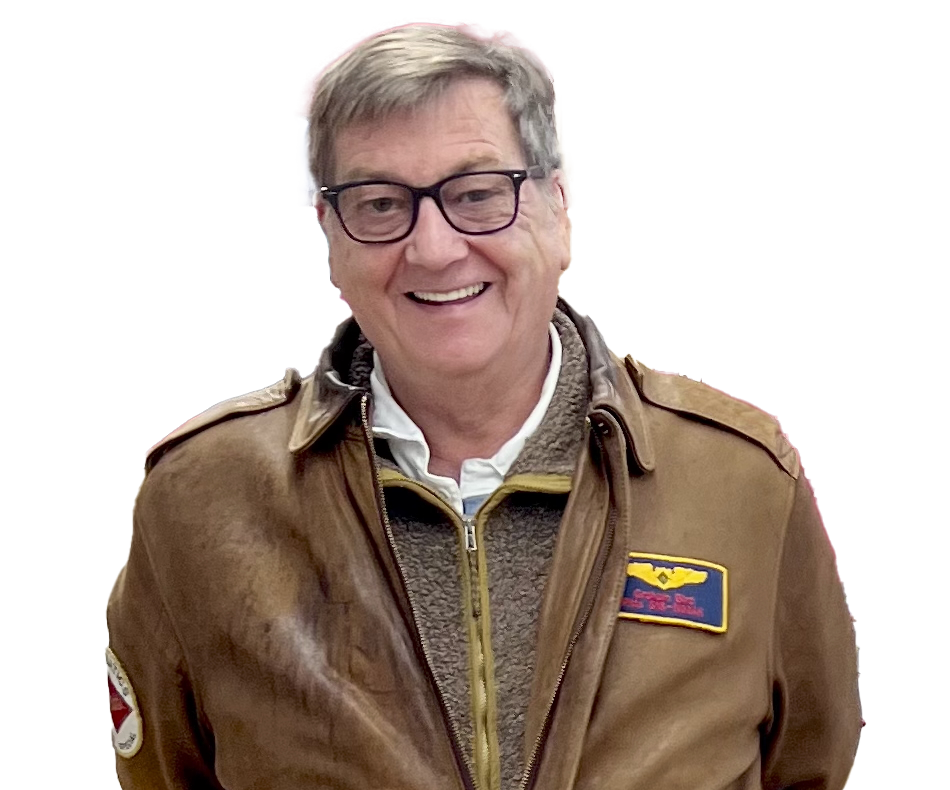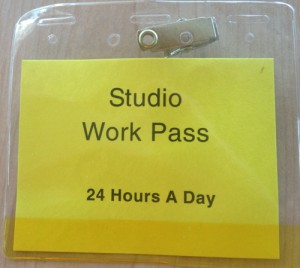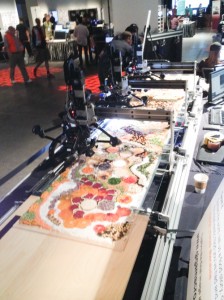What a month it has been! The first half of August, we drove two vehicles from the bay area to Vancouver, BC, a journey of a little short of 1,000 miles each way. We were there for SIGGRAPH conference, exhibition and an area for experimentation and leading edge technology called ‘The Studio‘ – that’s where we set up our project. It was there that we captured the almost 650,000 photographs we need to make the terabite image, a one terapixel macro image [Final image here]. A terapixel is one trillion pixels (or a million megapixels) and meant using three simultaneously shooting Magnify2 systems equipped with Canon 5D MkIII cameras for more than three days. The expectation that we would work long hours was confirmed when we got our access badge:
Here is more about it and what it looked like, in an interview with SIGGRAPH. The numbers for this project are amazing:
Each photograph was 22mm X 14.5mm and we took six photograph (in a stack) at each view location. We did this because the depth of field (or height that is sharp) is about 1mm, and we limited the food height to 5mm. Our volunteers didn’t always stick to that, so anything higher than that will be out of focus in the final image. Resolution is 6477 pixels per inch.
We laid out the foodstuffs on a series on plexi sheets, each 24” (610 mm) x 48” (1220 mm) with 3 Layout Panels on each plexi sheet. Each Layout Panel was 16 in x 24 in (407 mm x 610 mm) with a capture area of 16.45 in x 24.25 in (418 mm x 616mm) including .5” (6mm) for stitching overlap between panels. There are 37 columns, 45 rows and 6 stacks, for a total of 9990 photographs on each Layout Panel.
Time to shoot each panel is about 3.42 hours @ 3000 images per hour, for a total capture size of 16.8 gigapixels per Layout Panel. 588 megapixels are “lost” due to overlap with next layout panel in stitching. This gives a net of 16.2 gigapixels per panel. 61.76 panels are needed to break the 1 trillion pixel target. So, in total 62 layout panels equalling (16 in) 1.333 ft * 62 = 82.67 ft. About 212 hours total photography, using 3 Magnify2 systems = 70.66 hours, or 2.95 days. Add 15% change over time for loading Layout Panels. 81.259 hours / 24 hours = 3.385 days.
That brings the total photographs needed to 9990 per panel * 62 panels = 619,380.
Enough numbers for now!
The process was that the Student Volunteers – we had three assigned for each shift – along with anyone else who wished to join in, laid out food in a mosaic or pattern of their choosing on each sheet of plexi. These sheets were then fed into the system, taped to the sheet preceeding and the gap covered to match the ends of each sheet. Here is an example of some of effort that people put into their designs and how it looked on the system:
Here is how the preparation area looked (video) with the volunteers in the center foreground preparing the food mosaics and the Magnify systems to the left, shooting away at about 3,500 image an hour each. It was mainly smooth running: we learned a lot about the systems;
- that we could (with proper optimization and setup) run the system at 3,500 frames an hour
- that USB connections can be finicky and hard to troubleshoot
- that templates work really well, especially on large pieces like this (we ran the same template over and over on each machine)
- that just when you think it’s all going smoothly (Thursday night), problems occur! We seemed to have a power spike that affected one machine, so we continued the last half-day with 2 systems.
So now we have in our hot little hands about 645,000 photographs that need to be processed. We have many ideas on the way to process everything, but we are breaking new ground here. As I said in the interview one trillion pixels is a lot of data! Just to give you some idea, the stacking alone is at least a couple of weeks work – fortunately mostly computer processing. Then we have to stitch the resulting images into a single, terapixel, whole. And then break that huge image into the ’tiles’ that we use to look at our images via the web.
More as we progress with the processing……

Graham has worked as a business and marketing leader in high technology, aviation and not-for-profit large and small organizations.
He jumped out of corporate life in 2007 to ‘have more fun’ and does so helping small companies with strategy, business, and marketing as well as traveling and making pictures.
He loves working with smart groups of people to solve challenging problems.
Gadgets of all sorts (especially anything to do with aviation and flight) and photography have fascinated since early childhood. He is also an accomplished photographer who exhibits regularly and a former competition aerobatic pilot.
Graham is a transplanted Brit (hence the humo(u)r) who moved to CA in 1996. Now in Oregon via North Carolina (grandchild chasing)
He is a retired Fellow of the Chartered Institute of Marketing and a Chartered Marketer.
You can find him on LinkedIn please connect with him there.









